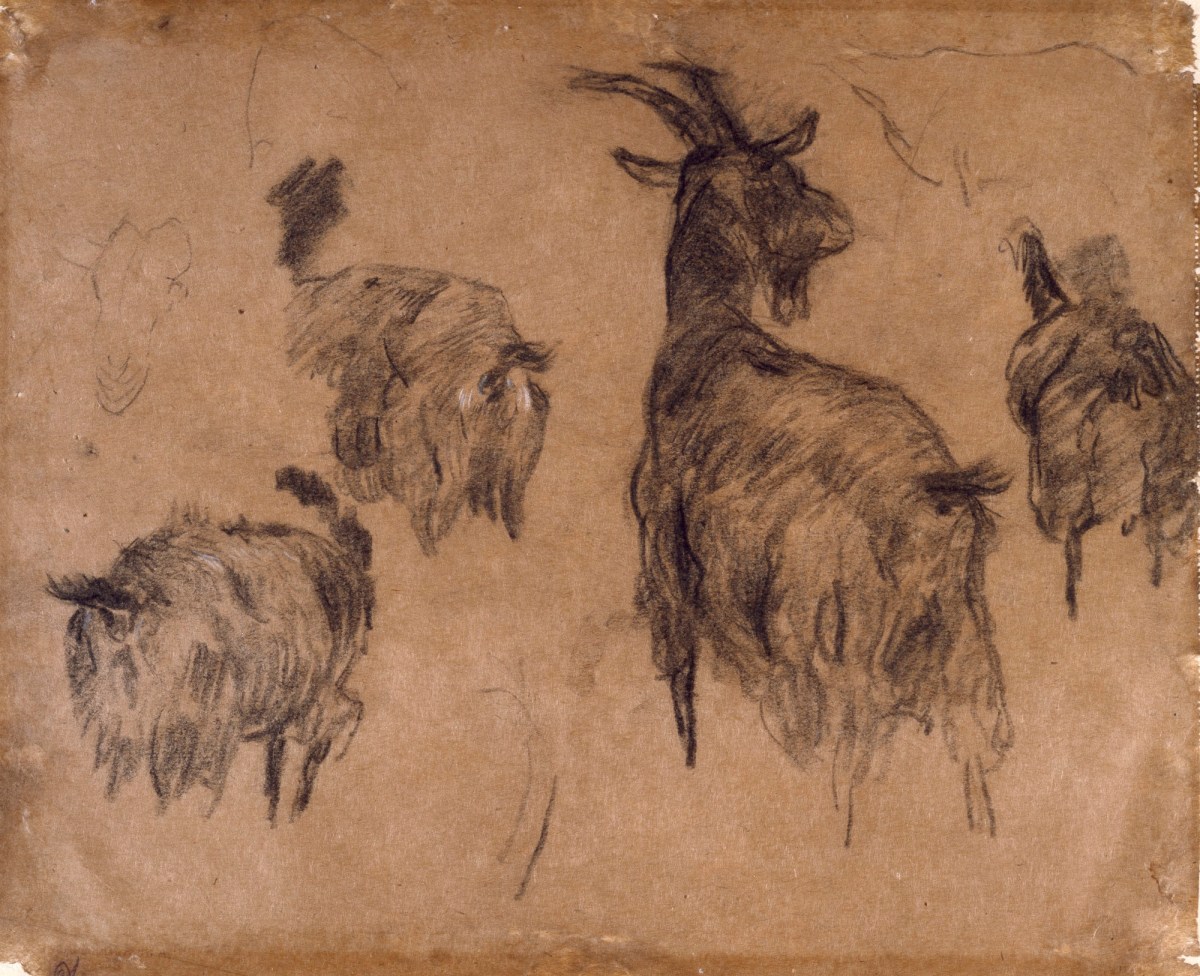
Edward Stott ARA, Study of goats.
Chalk on wove paper. 269 mm x 325 mm. © Photo: Royal Academy of Arts, London.
This image is not available to download. To licence this image for commercial purposes, contact our Picture Library at picturelibrary@royalacademy.org.uk
Study of goats
Edward Stott ARA (1859 - 1918)
RA Collection: Art
A study of goats drawn on paper that may have been torn out of a sketchbook and pinned up, probably in the artist's studio, to use as source material for his painting. Another drawing by Stott (03/2277), also bequeathed by Carel Weight, is drawn on similar coloured paper and also has perforated edges. However, the dimensions of the two drawings are not quite the same so they were probably not from the same sketchbook.
Four depictions of goats in the work, all shown from behind, have been drawn more completely - in particular a larger goat towards the centre right of the sheet - but there are also some faint outlines of heads and bodies elsewhere on the page. The British Museum owns a study of goats by Stott (1918,0704.2), drawn with charcoal and coloured chalks on similar paper (although the paper size is larger, so it cannot be from the same sketchbook).
Edward Stott was born in Rochdale, near Manchester, in 1859 and studied in Paris under Alexandre Cabanel and Carolus-Duran. During these formative years he was impressed by the work of French painters like Jules Bastien-Lepage, Jean-Baptiste-Camille Corot and Jean-François Millet, and began his career employing a 'plein air' style similar to that of George Clausen, Claude Monet and Henry Herbert La Thangue. Based in Amberley, West Sussex, from 1889 onwards, Stott concentrated on naturalistic depictions of rural life, which he would compose in a number of drawings before finishing the final painting in the studio.
The drawing was bequeathed to the Royal Academy by the artist Carel Weight RA, who was an avid collector of Stott's work.
Object details
269 mm x 325 mm
Start exploring the RA Collection
- Explore art works, paint-smeared palettes, scribbled letters and more...
- Artists and architects have run the RA for 250 years.
Our Collection is a record of them.



